- info@nzjane.com
- Auckland, New Zealand
Finding a beach in Nelson is ridiculously easy. You can hardly move from the regional airport and one of New Zealand’s top family beaches, Tahunanui is within your sights.
The province is coast to coast fringed with long stretches of gold perfection, shallow safe waters for children and plenty of campgrounds adjacent to the perfect summer holiday spot.
Nelson Abel Tasman National Park guide
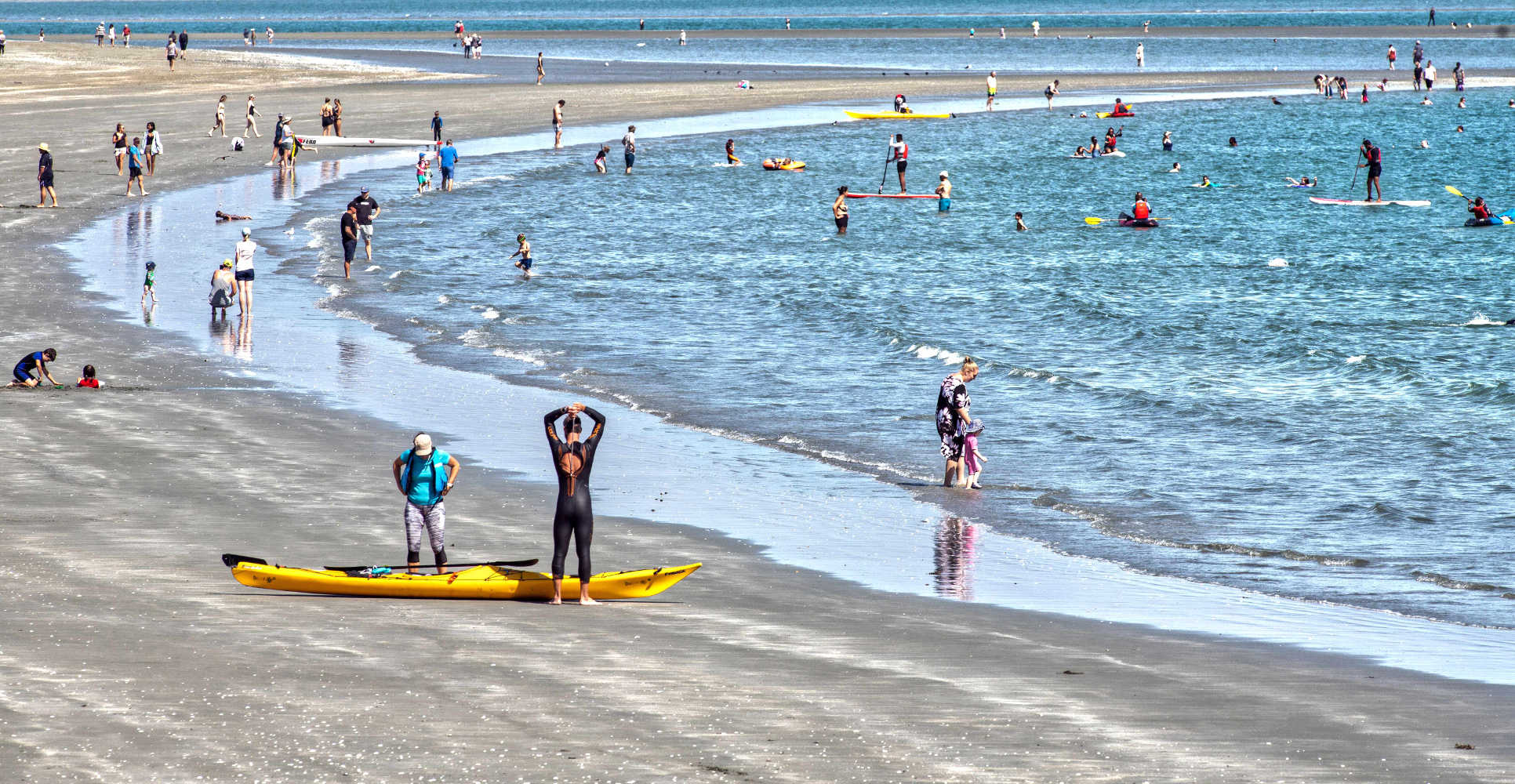 Tahunanui Beach
Tahunanui Beach
Close to Nelson city and the airport this beach is a family favourite. Over 1.7 km of white sands and gentle waves create a summer staple for a day at the beach for locals and visitors.
The beach is safe for swimming and popular with walkers, joggers and sun-seekers, with the back beach for kite-boarders and dog walking. Low tide exposes rock pools with crabs, sea-snails a prime site for kids to explore marine life.
Look out for a wharf where fishing buffs cast their lines in hopes of snapper, kahawai and blue code. Year round Tasman Bay offers sightings of dolphins and orca feeding in the ebb and flow of the tide. The beach has its own business hub Tahunanui, Nelson New Zealand – Tahunanui, Nelson New Zealand lobbying for the beach, reserve and community. For more information about what to do in Nelson city check out local cafes and what to do in nearby Stoke.
HIGHLIGHTS:
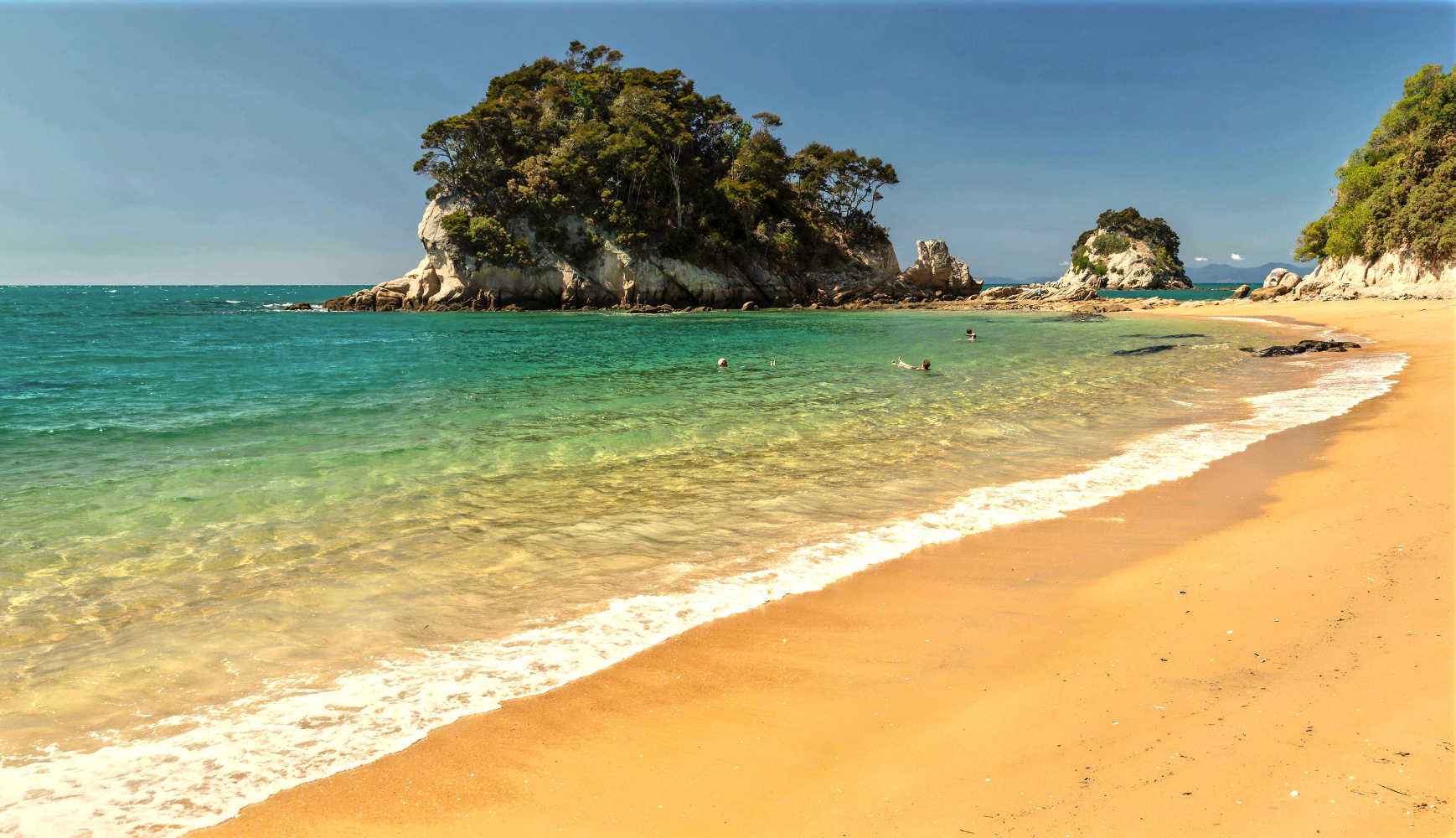 Kaiteriteri Beach
Kaiteriteri Beach
Glimmering gold sand, shallow turquoise water and deep green bush and forest brushing the water creates a magical setting for a summer holiday.
The beach is one of New Zealand’s top summer destinations with its proximity to the Abel Tasman National Park and adventure sports at its beck and call. There are water taxis, kayak hire, mountain biking trails and walks from one glorious beach to another.
WHAT TO DO, HIGHLIGHTS:
Read more about Kaiteriteri getting there and what to do and see. For ideas about Nelson check out Nelson Guide, Things to Do and get your walking boots on to explore Abel Tasman National Park.
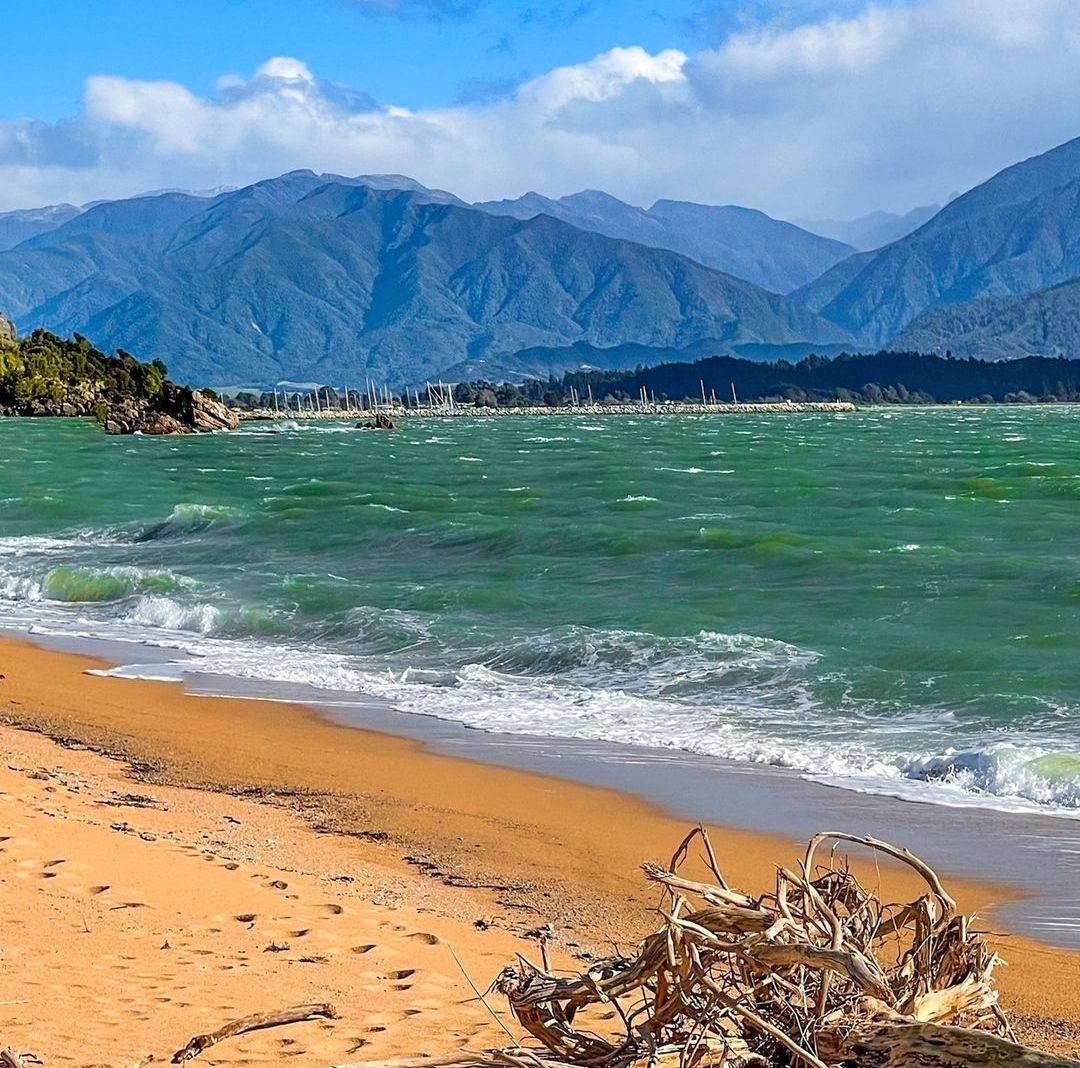 Tata Beach @douglasrpaul
Tata Beach @douglasrpaul
Impossibly gold sand, soft teal shallow water with barely a ripple and the bush reaching out to nestle against rocks and coastline is the recipe for a beautiful beach. The beach is accessible by water taxi or a gravel road (approximately 30 minutes) from Takaka. The two islands of Motu and Ngawhiti, also known as the ‘Tata Islands’ add to the picturesque scenic beach. Bird watchers enjoy observing New Zealand’s largest colony of spotted shags. There are seals and penguins on the islands which can be reached for up close observation on a kayak.

tip icon
TIP
Spotted shags regard the beach as their own with sunset a popular time to fluff their tails and regurgitate small stones (‘rangle’) in their gizzards on Tata Beach. For more information about the spotted shag check out the travel pack information section.
TOP SIGHTS:

Golden Bay access is a sealed road although it is windy, narrow and busy in the summer season. You are nearby Collingwood, a pretty historic town with plenty to do and see. Check out for inspiration about Abel Tasman National Park.
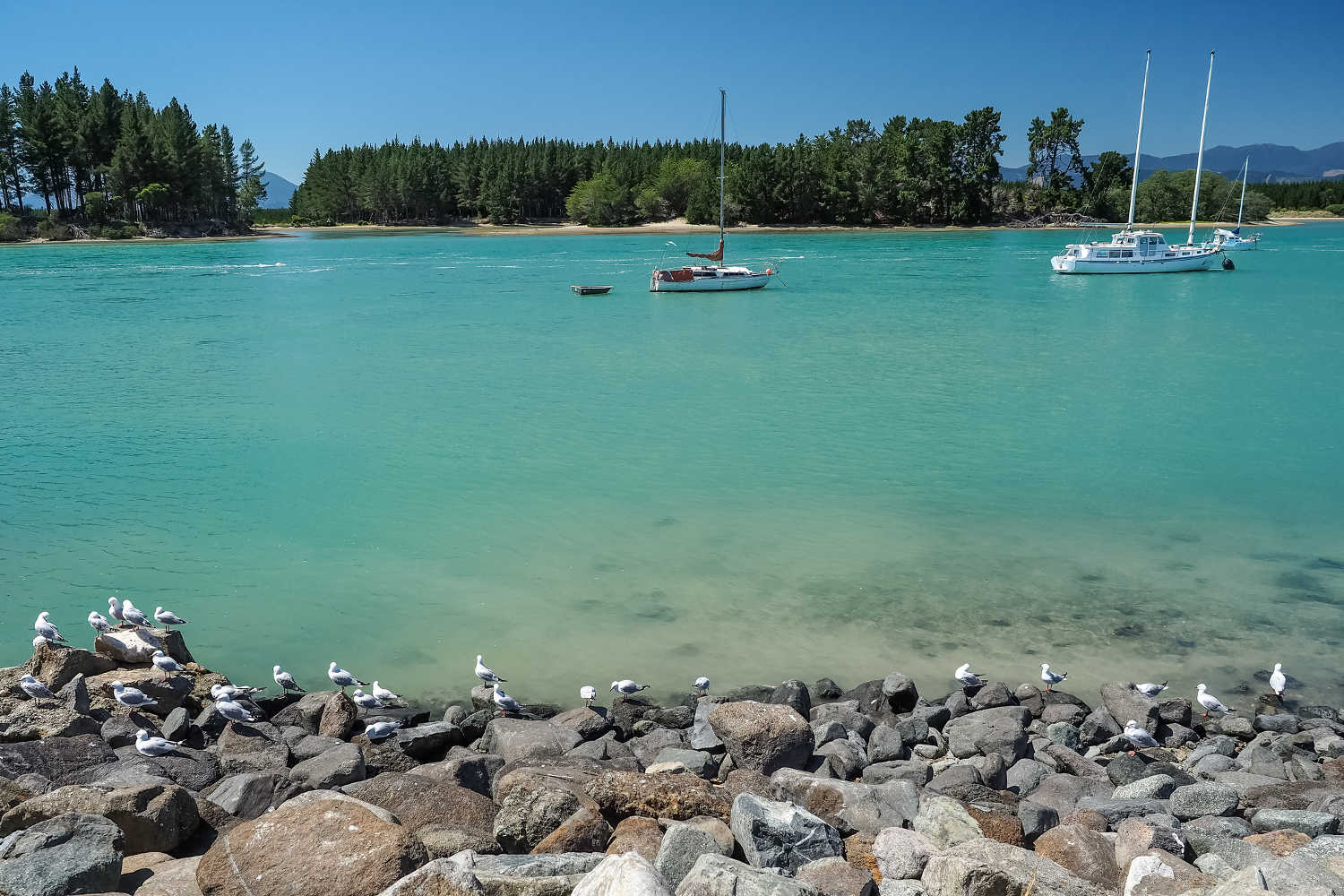 Rabbit Island, the other side of the river from Mapua Wharf
Rabbit Island, the other side of the river from Mapua Wharf
Discover a hidden gem behind the pine forest. Rabbit Island sandy beaches lie in the quiet water of the Waimea Estuary at the head of Tasman Bay. Find a dinghy or kayak to an island within cycling distance of Nelson. Rabbit Island is the biggest of a group of sandy islands lying in the Waimea Estuary at the head of Tasman Bay. The island’s interior is one of the more popular cycling sections of the Great Taste Cycling Trail. Lycra garbed riders follow the Rabbit Island section. The route runs across Rough Island and into Rabbit Island alongside Ken Beck Drive. It continues to the Mapua Ferry landing site at the western end of the island. For families with a mountain bike enthusiast it is a great place to offer choices of what to do for the day while you collapse on the beach watching kids paddle.

tip icon
TIP
Ten minute ferry ride from Mapua Wharf on a local ferry transporting bikes and holiday makers.
HIGHLIGHTS:
You can drive from Nelson to a car park across the causeway to the ‘island.’
More about Moturoa (Rabbit Island)
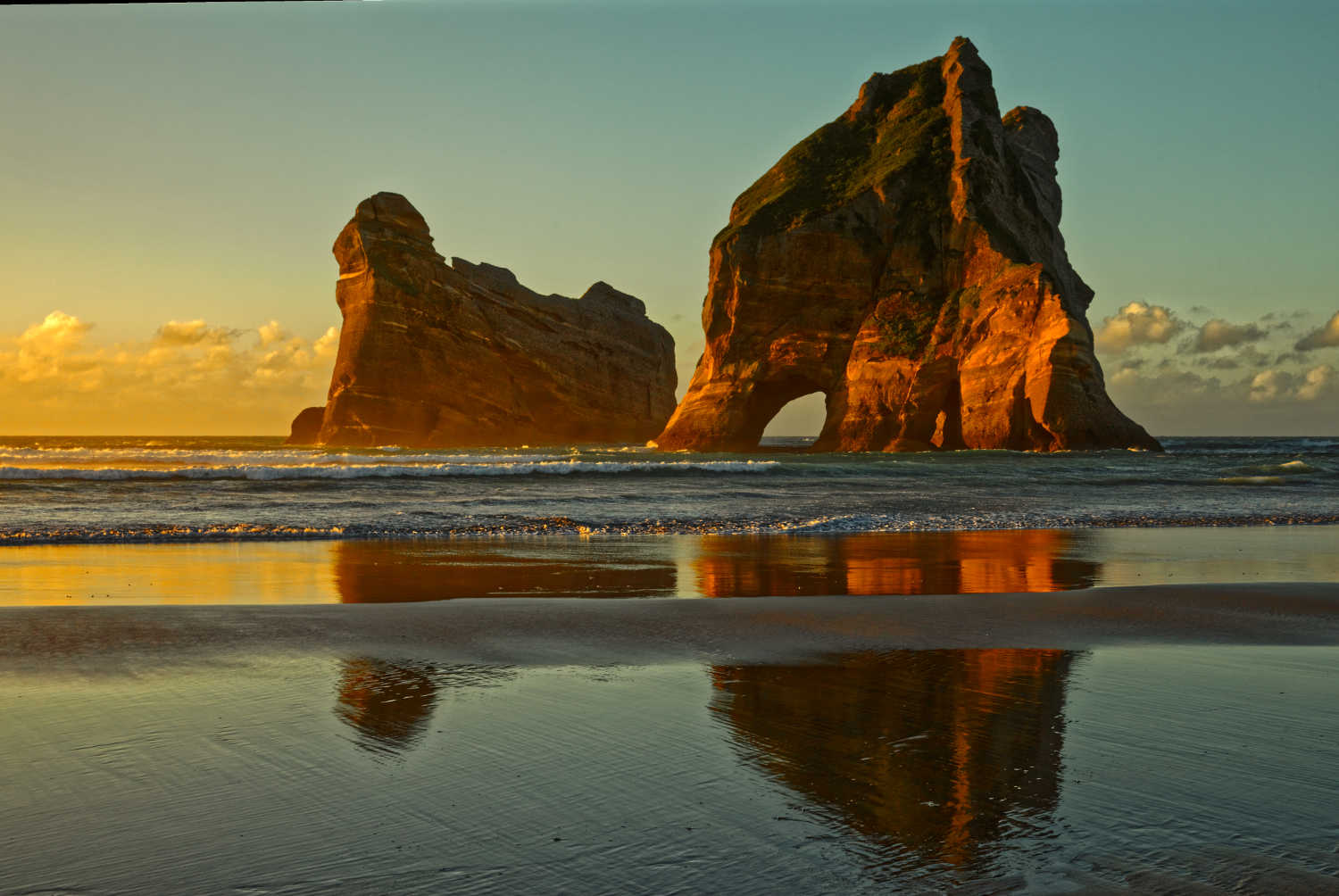 Archway Rock at Wharariki Beach
Archway Rock at Wharariki Beach
Uncover a remote beach with its iconic SPLIT APPLE ROCK at the beginning of Farewell Spit. Wharariki Beach access is a journey in itself with a considerable drive to gain access to the beach’s walking track. This is a beach where the scenery dominates. Forget about swimming as there are dangerous undercurrents on the unpatrolled beach. Absorb the caves, the rocks and sculptured weathered rock arches. Your walk to the beach passes farmland, coastal bush reserves and transverses a large tussock dune landscape before unfolding into a wild natural beach. One of the most photographed beaches in New Zealand, the landscape captures the raw beauty of the seascape. For ideas of what to do in the area check out Collingwood: Things To Do and See in Golden Bay – Best Bits and consider a Farewell Split guided tour.
HIGHLIGHTS:
You are spoiled for choice with numerous beaches located within the National Park. For ideas and holiday inspiration about what to do in the park check out Abel Tasman National Park options. The park is a pink sized national treasure that punches above its size with its global appeal. This is due to the glittering gold beaches, shallow turquoise waters, spectacular ocean views and range of wildlife. And then there is the glorious weather … read more Abel Tasman National Park trip guide & tips, things to do: Best Bits.
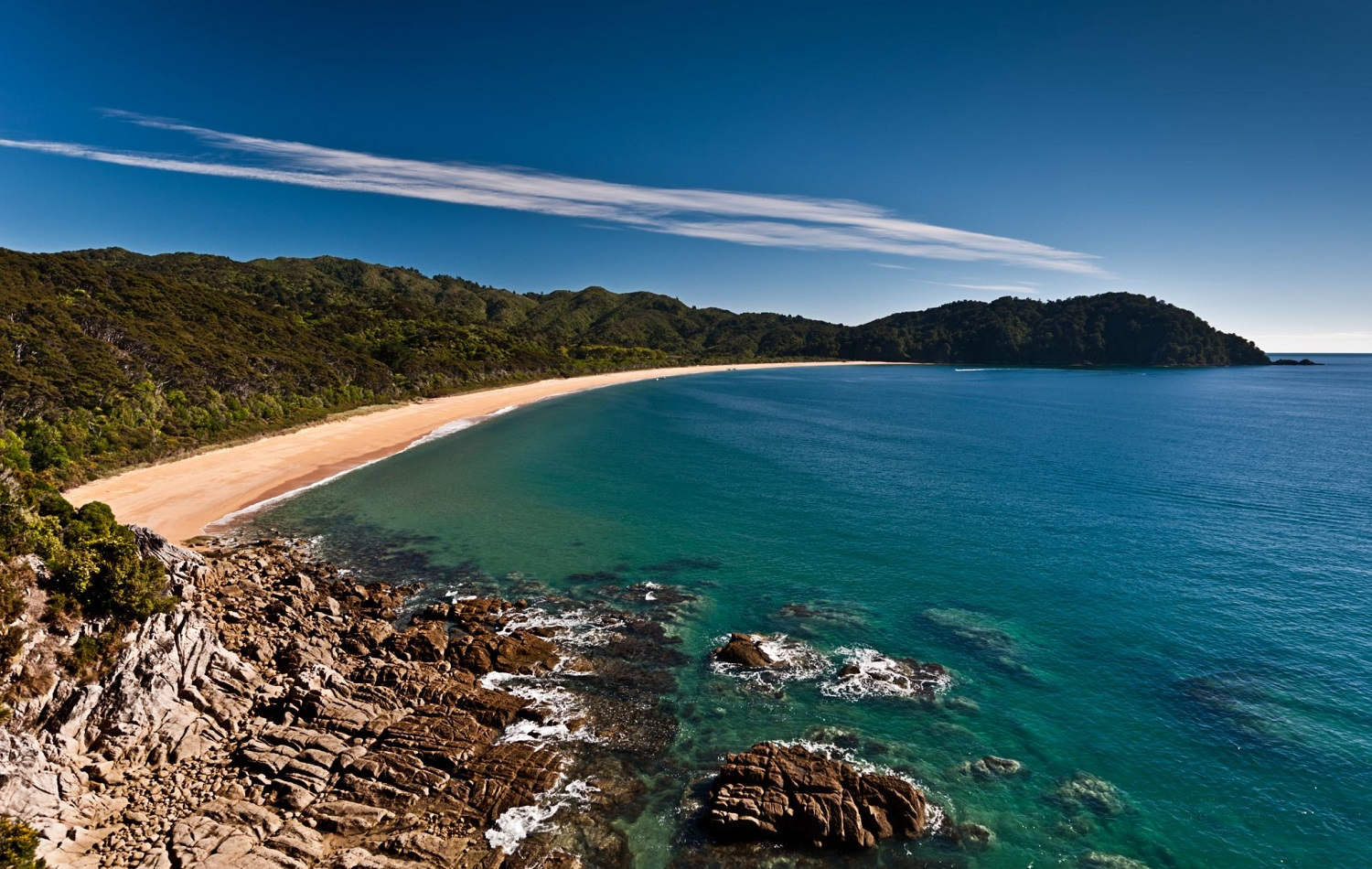 Totaranui Beach @Totaranui Camping ground
Totaranui Beach @Totaranui Camping ground
The beach is approximately 1 km in length, gold sand, with substantial camping grounds supporting a wide range of activities. It is very popular and gets booked out during the peak summer season. Accessible by boat, car or even kayak. It is probably the most popular spot in the Abel Tasman. It is also a useful spot to access the Northern section of the park and is the last water taxi point.
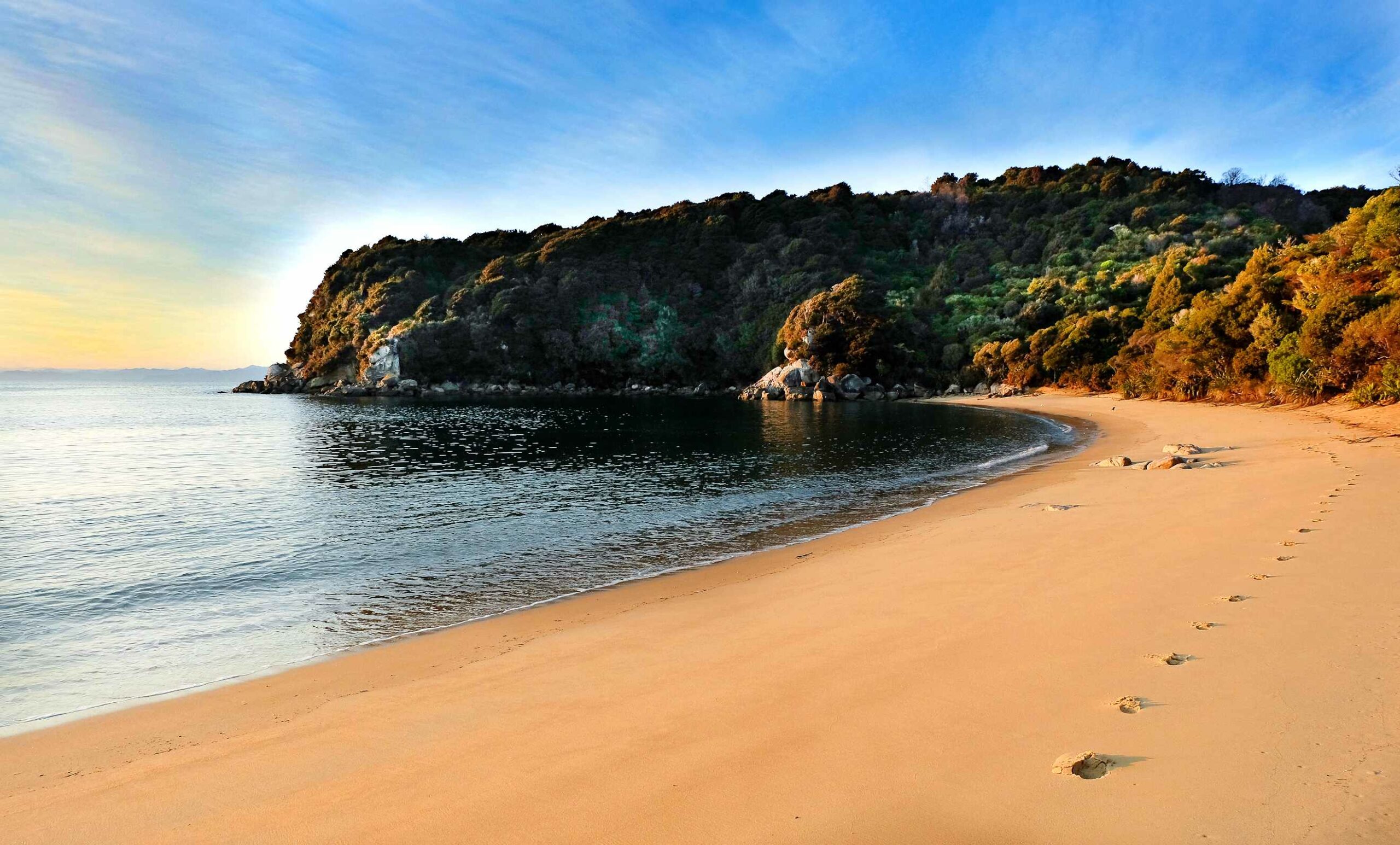 Te Pukatea bay on Pitt Head Loop Trail
Te Pukatea bay on Pitt Head Loop Trail
A hidden gem and not difficult to access, you can kayak from Anchorage and it is a 10-minute walk from water taxi scheduled drop off points. Camping is permitted with space for 7 tent sites, 14 campers, 2 long drops and picnic tables! Water is here too but must be boiled. As Anchorage is only 10 minutes away, fresh water is just a short stroll up the beach.
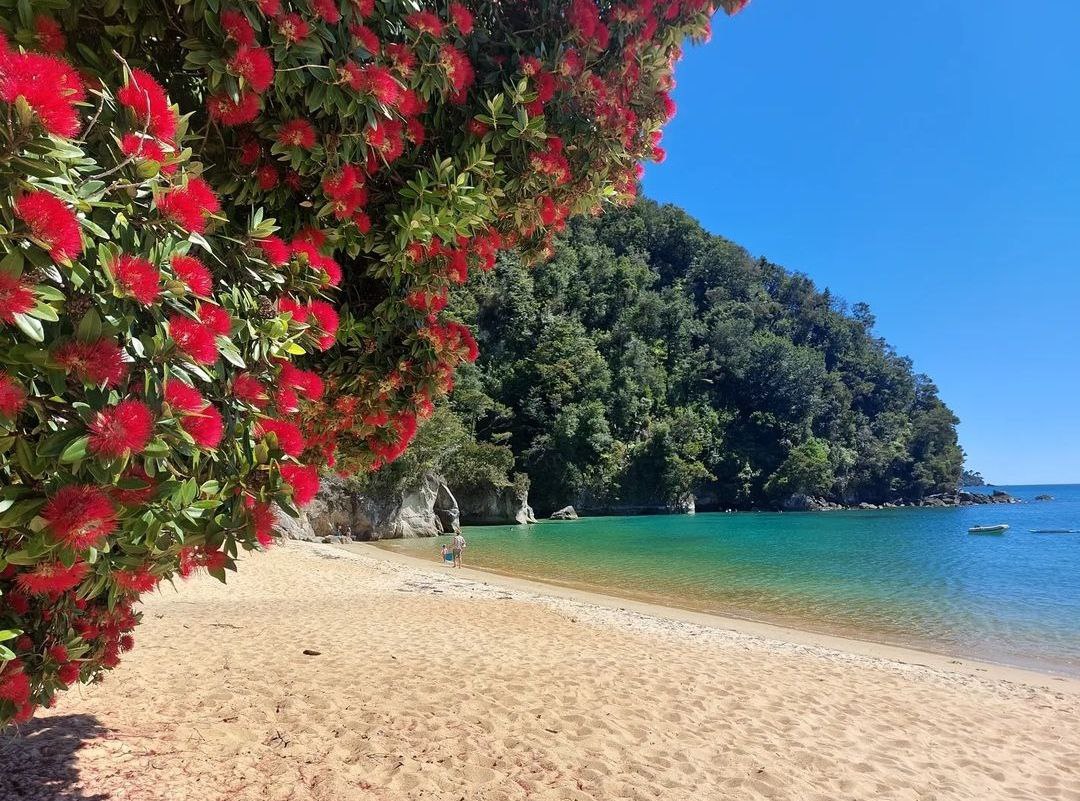 Pohutukawa at Anchorage Bay
Pohutukawa at Anchorage Bay
Very popular, it is long, picturesque and in the perfect location for services. A popular way to access the beach is walking from Marahau (12km). The facilities are a large campground with fresh drinking water, toilets and kitchen facilities. It is usually fully booked several months in advance during the peak summer season. Anchorage being the most well-known as well as being a transport hub for water taxis and kayaks.
For more to do and see in the region check Nelson guide, things to do from walks, nearby day trips and highlights.
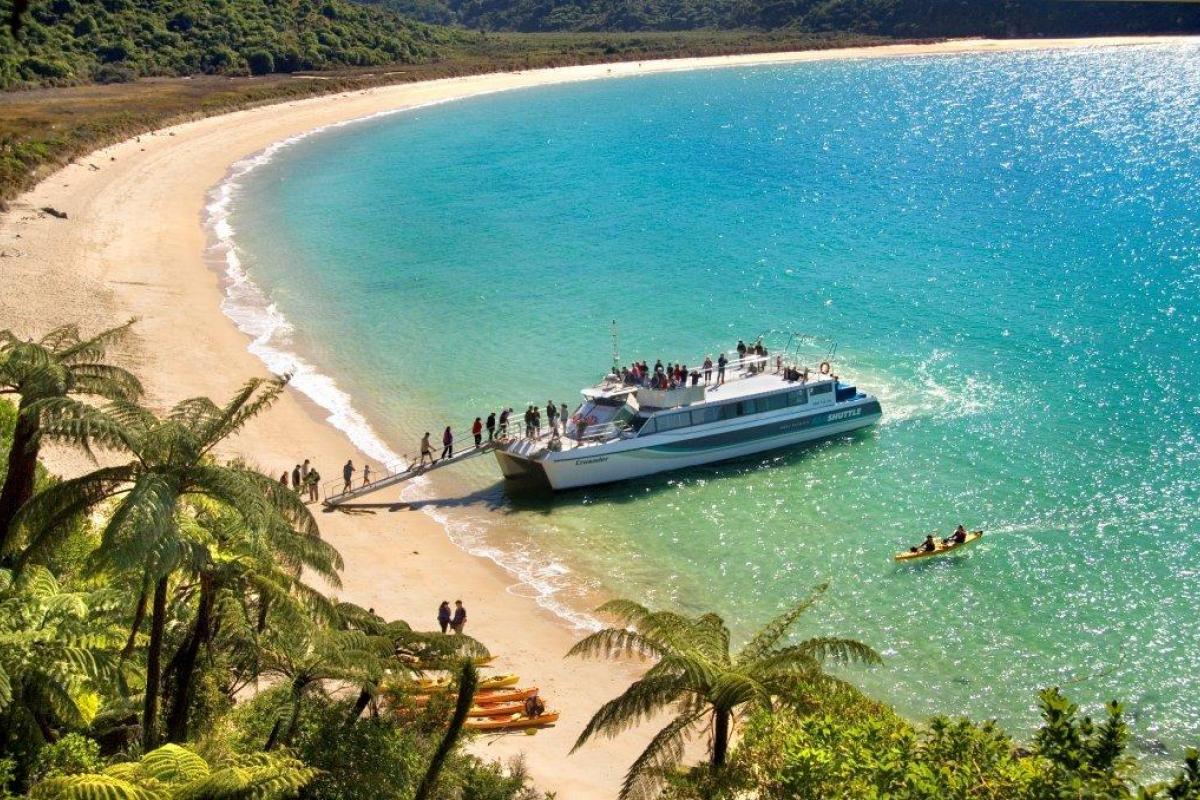 Motueka Beach Reserve @Motueka Top 10
Motueka Beach Reserve @Motueka Top 10
Motueka is a popular beach side holiday destination with its cafes, art & craft community combined with the top-notch beaches in the vicinity.
More about Motueka Beach Reserve
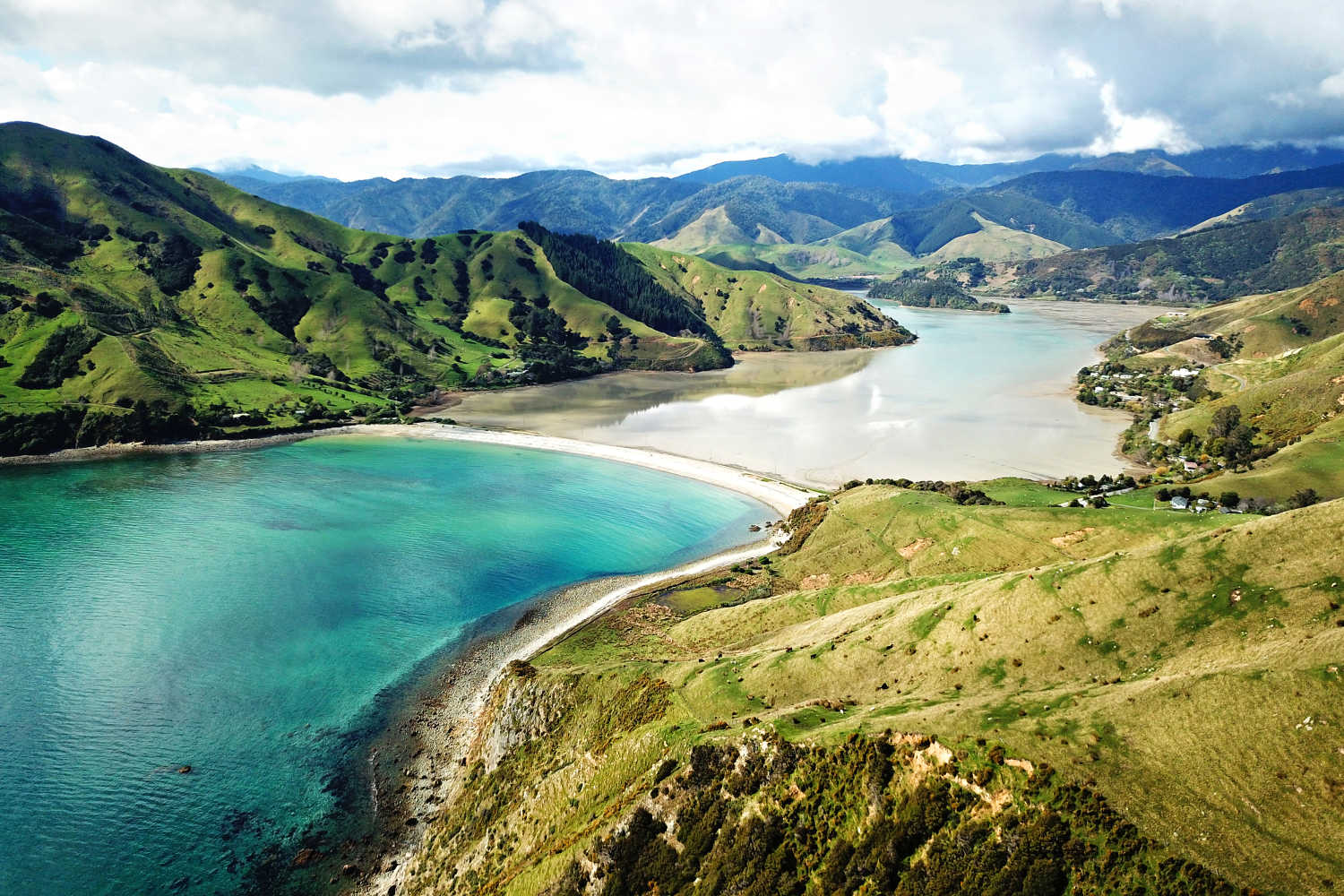 Cable Bay
Cable Bay
Cable Bay has a great cafe, a walkway and you can walk the entire beach (5.5 km) to connect with Glen Beach.
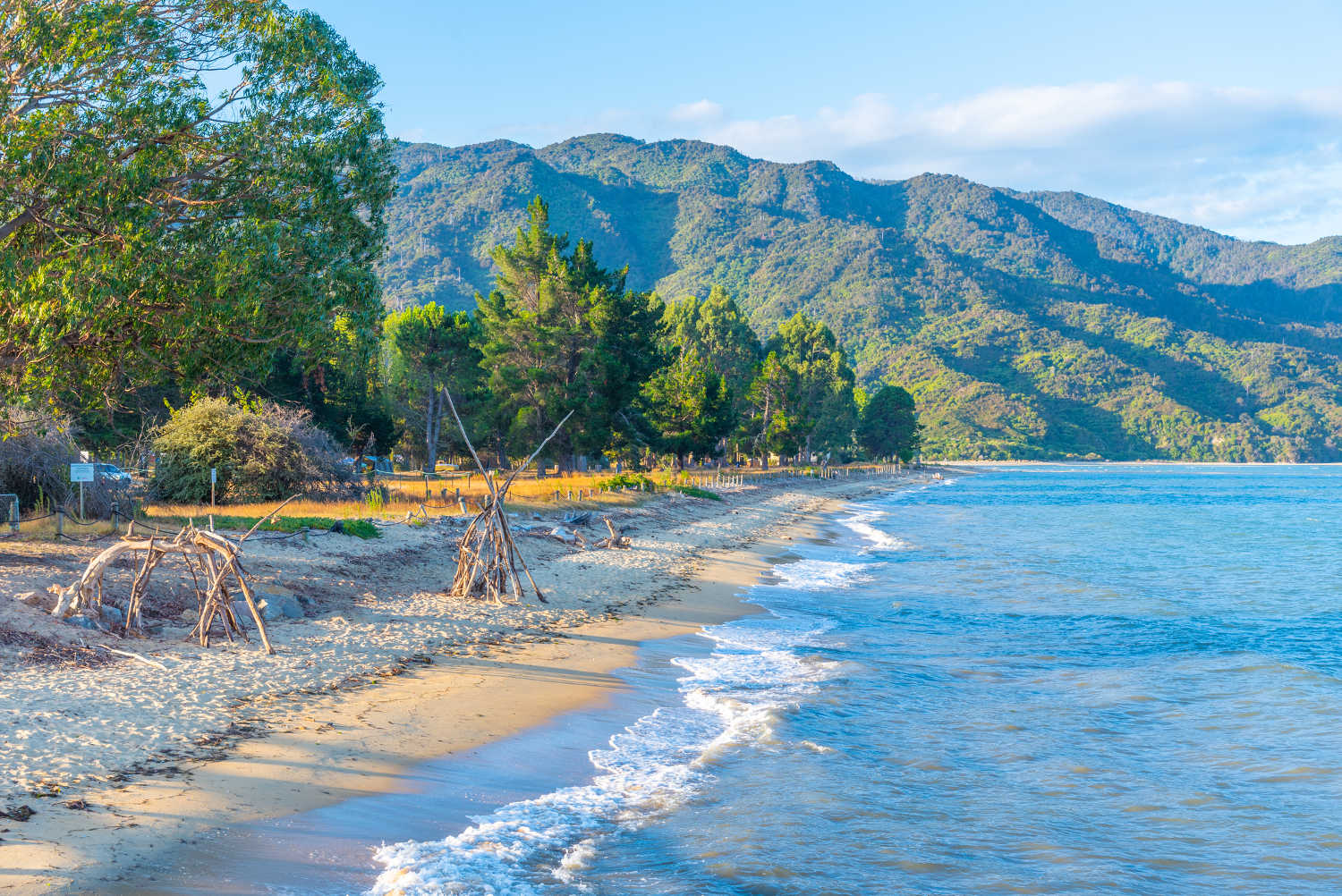 Marahau Beach
Marahau Beach
At the southern entrance to Abel Tasman National Park is a coastal park fringed with ’golden sands, clear water, native forest and abundant wildlife.
A licensed restaurant sits at the hub of this colourful diverse community.
TRAVEL PACK INFORMATIONIn Nelson, Nelson City Council monitors 11 swimming spots. The areas include five coastal beaches and six rivers, which are monitored from November 30 to March 15 on a weekly basis. For more information check Bathing water quality Nelson.
Spotted shags dive from the sea surface to catch fish and marine invertebrates with their slender hooked bills, propelling themselves underwater with webbed feet. Outside the breeding season they form large feeding and roosting flocks of up to 2000 birds. Elaborate male display movements include wing-waving, swing-pointing, bowing, darting, sky-pointing, gaping, kink-throating, hopping, and various other body postures. Displaying males grunt; females are silent.
Spotted shag diet consists of small fish and marine invertebrates, including squid and plankton. They feed in deep water up to 16 km offshore. Longest dive recorded was 70 seconds. Spotted shags often have a mass of small stones (‘rangle’) in their gizzards, the function of which is debated, with possibilities including to function as ballast, to grind up food, and to create an inhospitable environment for gut parasites. Roosting birds often regurgitate piles of rangle stones that are obvious on sandy beaches but overlooked at rocky sites.
Source Spotted shag (NZ birds online)

BEST BITS TRAVEL GUIDE


Your enquiry has been successfully sent. We will contact your shortly.

You will get your insider discount checklist shortly.